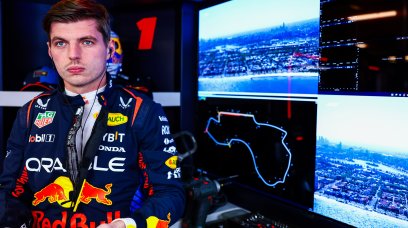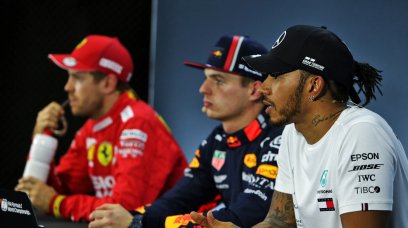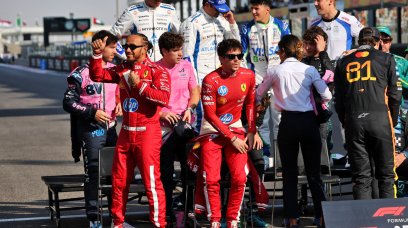March 29th 2024 marks 15 years to the day since Jenson Button led the most remarkable one-two finish in the history of Formula 1 at the Australian Grand Prix.
Button converted pole position into a fairytale win with team-mate Rubens Barrichello second in the debut race of Brawn Grand Prix - the team being saved by Ross Brawn over the winter of 2008 after Honda's withdrawal.
It was the catalyst for Button's charge to the most unlikely of world championships - and it all began with just his second race win, and first in nearly three years as he started his 10th season in F1.
Viewed by others:
The state of F1 in 2009
A lot had changed in the F1 that headed home from Brazil at the end of 2008 and the one that headed Down Under a few months later.
Firstly, the cars had undergone a drastic change with all of the aerodynamic appendages that had cluttered the 2008 cars stripped away for squarer, simpler, designs and this had caught the front-runners out.
Grooved tyres were also out, with slicks returning for the first time since the 1997 title-deciding European GP at Jerez.
Ferrari and McLaren had invested so much into the 2008 title push that their F60 and MP4-24 machines were dreadfully off the pace - although Ferrari did manage to qualify sixth and seventh as reigning World Champion Lewis Hamilton started a lowly 18th on the 20-car grid following a gearbox penalty.
This opened the door for some of the midfield teams to hit the ground running with the new rules as Red Bull became a threat for the first time.
Also helped by the new rules were the Lazarus-like Brawn that the former Ferrari boss had brought for just £1 from Honda after its withdrawal as the global economy tanked and spending millions on a racing programme for scant reward with lay-offs in the road car division not exactly the best PR.
Controversy brewed, as it normally does at the start of an F1 season over the so-called double-diffuser on the back of the Brawn, Williams and Toyota cars, that the FIA deemed legal. Red Bull's Adrian Newey is not so sure it was, even to this day.
Politically, Bernie Ecclestone was lobbying to try and get the way the championship was awarded changed with his 'medal system' as embattled FIA President Max Mosley put forward his version of a cost cap, with $30 million the limit for teams who agreed to the cap, but would be allowed greater technical freedom.
But after Button led a Brawn one-two in qualifying, the time for off-track talking was over.
Button's Brawn Bonanza
At lights out, Barrichello dropped down the order after fluffing his getaway as Button led through Turn 1.
The Brazilian then clattered into Mark Webber's Red Bull, who in turn spun Nick Heidfeld's BMW.
It was a relatively stress-free afternoon from Button who led from lights-to-flag, with only a late safety car causing trouble.
That was because Robert Kubica and Sebastian Vettel all got a bit silly at Turn 3, collecting each other in a needless scrape, before Kubica crashed heavily at Turn 5, deploying the safety car.
Vettel tried to carry on with three wheels attached to his RB5 wagon, but called it quits as events then spiralled for Hamilton and McLaren.
In the train behind the safety car, Toyota's Jarno Trulli went wide from third place, and Hamilton passed him, as is allowed in that situation.
However, McLaren told Hamilton to let the Toyota back through, and so Trulli effectively overtook under safety car conditions and was hit with a 25-second time penalty, dropping him to 12th.
Hamilton had told the stewards he was not informed to let Trulli through, which was proved to be a lie when radio transcripts were discovered next time out in Malaysia. Trulli got his third place back, Hamilton was disqualified and McLaren team manager Dave Ryan sacked.
But none of this was of any concern to Button who was about to embark on one of the most famous seasons in F1 history and end it as Britain's 10th World Champion.
Don't miss out on any of the Formula 1 action thanks to this handy 2026 F1 calendar that can be easily loaded into your smartphone or PC.
Download the calenderMost read
In this article













Join the conversation!